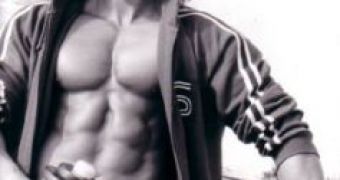A new research revealed that artificial steroids (imitating testosterone activity) injection in the shoulder to relieve muscle pain and therefore, improve shoulder function should not be made if the patient makes physical effort.
"Steroid injection temporarily produces a molecular response in the tissue that is similar to that of a tendon injury, possibly making it more vulnerable to damage during this time," said lead researcher Dr. John Callaci, assistant professor, department of orthopedic surgery and rehabilitation, Loyola University Chicago Stritch School of Medicine, Maywood, Illinois.
"This is especially important because steroids often give patients rapid pain relief," said Callaci.
"That is why steroids are so popular, but physical therapy also can produce some of the same effects. It just takes longer. If a patient returns to rigorous activities right after a steroid injection, the weakened tissue may not be able to sustain itself."
But these effects do not appear in any given situation.
"We found that steroid injections cause a tendon to behave in a way where it thinks it has been acutely injured," noted Callaci.
The research team investigated in rats the global gene expression profiles in rotator cuff tendons after injury, injection with steroids and both.
2,000 genes were activated by injury; 1,000 genes by steroids and a large number, 750, by both.
"Not only did gene expression overlap but so did some biological pathways," said Callaci.
"Acute injury of the rat rotator cuff tendon significantly modulated the expression of genes in 26 different biological pathways and steroids affected 13 pathways. Twelve of the 13 overlap with the injured pathways. The implication of an overlapping pathway is that you have pathways that are modulated after an injury suggesting the tendon is doing things to try to heal itself," said Callaci.
"That might suggest there might be a temporary period of vulnerability or weakness in a tendon. It thinks it is being injured and it produces things that normally it produces after injury, which might cause some temporary instability."
In a new biomechanical study, the team will determine how the steroids influence strength, stress, strain and elasticity of tendons.
"We are investigating the biological basis of how tendons heal and how steroids may modulate that healing. We want to see if there are actual differences in biomechanical properties right after steroid injection," said Callaci.

 14 DAY TRIAL //
14 DAY TRIAL //